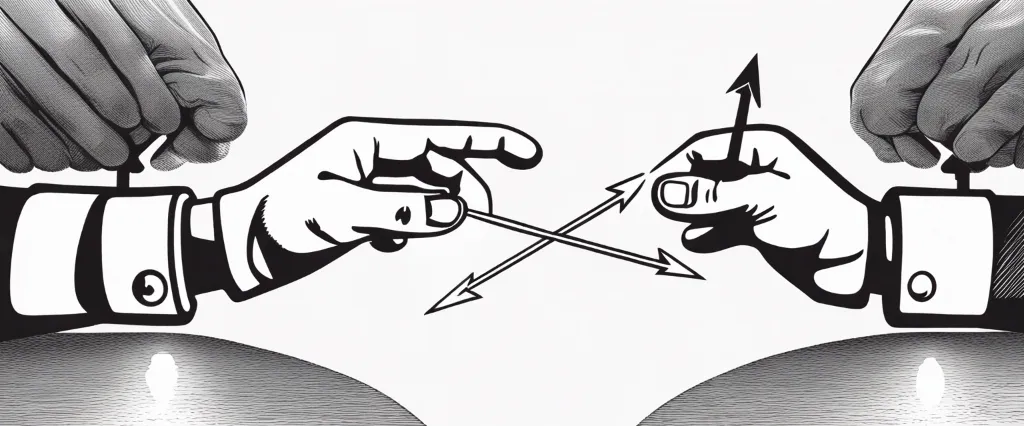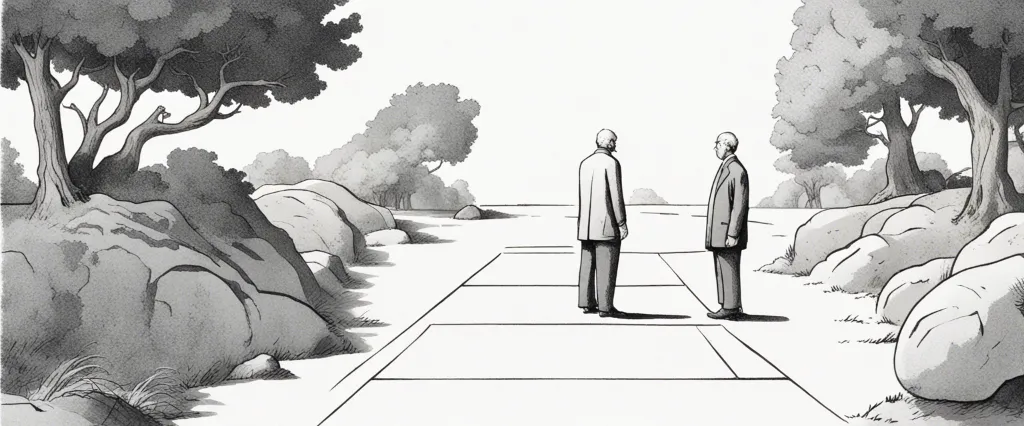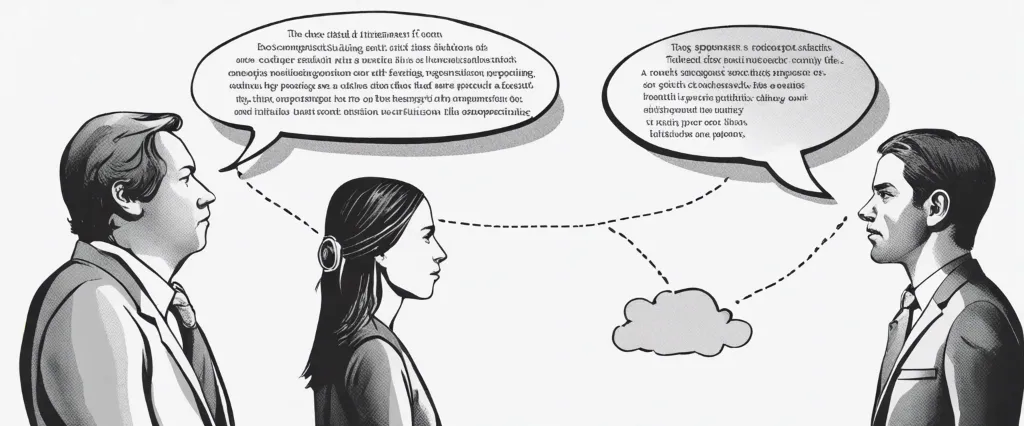
In a world inundated with an abundance of information, decision-making becomes an essential skill that can greatly influence the trajectory of our lives. The ability to sift through the noise, identify relevant factors, and make sound choices is an invaluable asset. Two books that have dared to delve into the realm of decision-making, offering unique perspectives and insights, are “Decisive” by Chip Heath and “Blink” by Malcolm Gladwell.
Chip Heath, a renowned organizational behavior expert, explores the universal struggle we face when making choices in his book “Decisive.” Drawing on extensive research and a wealth of real-life examples, Heath uncovers the inherent challenges we encounter when faced with difficult decisions. His book offers a systematic approach to decision-making to help individuals overcome biases, reduce uncertainty, and ultimately achieve better outcomes.
“Precisely the opposite of Chip Heath’s methodical approach, Malcolm Gladwell’s “Blink” takes us on a journey into the realm of instinctive decision-making,” makes for an intriguing contrast. Gladwell, a celebrated writer and journalist, presents a captivating narrative that investigates the power of intuition and rapid cognition. Guiding readers through fascinating case studies, Gladwell impressively demonstrates the remarkable capacity of our subconscious minds to make split-second decisions without the need for deliberate analysis.
As these two prominent authors explore the intricacies of decision-making, their contrasting approaches and perspectives raise intriguing questions and provide fertile ground for comparison. This comparative study aims to examine the key arguments, methodologies, and implications presented in “Decisive” and “Blink,” shedding light on their respective strengths, weaknesses, and the broader implications they hold for our understanding of decision-making.
Through this analysis, readers will gain a deeper understanding of the complexities surrounding our choices. We will explore how Heath’s systematic decision-making process stands in contrast to Gladwell’s exploration of the power of intuition. By examining the research, anecdotes, and practical implications of both books, we aim to uncover the most effective strategies for navigating the labyrinth of decision-making.
Whether you find solace in a methodical analysis of options or believe in the power of instinct, the exploration of these two books will provide invaluable insights into the human capacity for decision-making. Together, let us embark on this comparative journey and discover the secrets behind making better decisions, one page at a time.
Brief Summary of Two Books
Decisive by Chip Heath
Decisive by Chip Heath is a book that explores the common mistakes people make when making decisions and offers practical strategies to help individuals and organizations improve their decision-making process.
The book begins by highlighting the biases and limitations that cloud our judgment, such as narrow framing, confirmation bias, and short-term emotions. These tendencies often lead us to make poor decisions by focusing on only a small aspect of the problem, seeking information that supports our preconceived notions, and being swayed by immediate feelings.
To counteract these biases, the authors introduce a four-step process called the “WRAP” framework. The first step is to widen your options. Instead of settling for either/or choices, the authors encourage readers to consider multiple alternatives and avoid falling into the trap of narrow framing. They provide practical tips on how to generate more options and create a larger pool of possibilities.
The second step is to reality-test your assumptions. This involves gathering information, seeking diverse perspectives, and actively challenging your initial assumptions. By seeking out contradictory evidence and considering a range of viewpoints, you can avoid confirmation bias and gain a clearer understanding of the problem at hand.
The third step is to attain distance before deciding. This involves creating mental or emotional space to gain perspective. The authors suggest techniques such as zooming out to the larger picture, seeking advice from others, and conducting “pre-mortems” to imagine potential future failures. These strategies allow for a more objective evaluation of options and help mitigate short-term emotions.
The final step is to prepare to be wrong. This involves establishing a feedback loop to learn from your decisions and adjust your approach accordingly. By embracing uncertainty and recognizing that not all decisions will be perfect, individuals can adapt and improve their decision-making skills over time.
Through engaging stories and practical examples, Decisive offers valuable insights and strategies to help readers overcome biases, broaden their options, and make more informed and effective decisions. Whether in personal or professional contexts, the book provides a clear roadmap for better decision-making and avoiding common pitfalls that hinder progress and success.
Blink by Malcolm Gladwell
“Blink” by Malcolm Gladwell is a thought-provoking book that explores the power of rapid cognition, or the ability to make quick judgments and decisions based on limited information. Through various real-life examples and academic research, Gladwell explores how the human mind can arrive at accurate conclusions in the blink of an eye, sometimes even faster than conscious thought.
Gladwell delves into the concept of “thin-slicing,” which refers to our ability to make judgments based on minimal information. He explains how our subconscious mind can process and analyze vast amounts of data in a split second, presenting us with an intuitive understanding or gut feeling. However, Gladwell also highlights the potential risks of relying too heavily on these rapid judgments, as they can sometimes be influenced by implicit biases and stereotypes.
The book delves into various topics such as expert judgment and how professionals in various fields, such as art and medicine, develop their intuition and make quick decisions. Gladwell also explores the role of our beliefs and experiences in shaping our snap judgments, as well as the impact of our environment on these processes.
Throughout “Blink,” Gladwell emphasizes the importance of understanding the power of rapid cognition and how it influences our everyday lives. He provides practical insights on how individuals can harness and improve their rapid decision-making skills, as well as when it is necessary to take a more deliberate and conscious approach.
Overall, “Blink” challenges conventional notions of decision-making and encourages readers to appreciate the immense power of our subconscious minds in making accurate judgments, while also cautioning against the potential pitfalls of relying solely on snap judgments in certain situations.
Comparison between Two Books

Similarities in Decision-making
“Decisive” by Chip Heath and “Blink” by Malcolm Gladwell both explore the concept of decision-making and provide insights into understanding the factors that influence our choices. Despite their different approaches, several similarities can be identified in these books.
1. Focus on the power of intuition: Both books emphasize the role of intuition in decision-making. While “Decisive” emphasizes the importance of balancing rational analysis with gut feelings, “Blink” highlights the idea of “thin-slicing,” where quick judgments based on limited information can often be surprisingly accurate.
2. Recognition of cognitive biases: Both authors acknowledge the presence of cognitive biases that can cloud our decision-making. “Decisive” identifies four common biases – confirmation bias, overconfidence bias, short-term emotion bias, and familiarity bias – while “Blink” discusses biases such as priming, stereotyping, and implicit associations. Both books seek to increase awareness of these biases to promote better decision-making.
3. Examination of the decision-making process: Both books delve into the intricate process of decision-making. “Decisive” presents a four-step framework for effective decision-making (Widen Your Options, Reality-Test Your Assumptions, Attain Distance Before Deciding, Prepare to be Wrong), whereas “Blink” focuses on the quick, subconscious nature of decisions and highlights the importance of understanding what information is relevant in the given context.
4. Case studies and examples: Both authors employ numerous real-world examples and case studies to illustrate their points. “Decisive” includes stories of successful decision-making by individuals and organizations, while “Blink” features examples from various fields, including art, medicine, and music. These real-life accounts contribute to the practicality and relatability of the books’ concepts.
5. Emphasis on the importance of diverse perspectives: Both books stress the significance of seeking multiple perspectives before making decisions. “Decisive” encourages individuals to consider a wider range of options and involve others in the decision-making process. Similarly, “Blink” highlights the value of diverse viewpoints in preventing biases and increasing the accuracy of decisions.
In summary, “Decisive” by Chip Heath and “Blink” by Malcolm Gladwell share common themes of intuition, cognitive biases, the decision-making process, the use of case studies, and the importance of diverse perspectives. As readers navigate through these books, they can gain a deeper understanding of decision-making and develop strategies to improve their own ability to make sound choices.
Divergences in Decision-making
Both “Decisive” by Chip Heath and “Blink” by Malcolm Gladwell tackle the topic of decision-making, but they approach the subject from different perspectives and offer distinct insights. While both books provide valuable ideas and suggestions, they diverge in their focus on how decisions are made, the role of intuition, and the impact of biases.
One divergence between the books lies in their emphasis on the decision-making process. In “Decisive,” the Heath brothers present a four-step framework to overcome decision-making challenges known as WRAP – Widening the options, Reality testing assumptions, Attaining distance before deciding, and Preparing to be wrong. They argue that incorporating these steps into the decision-making process enables individuals to avoid common traps and biases that can inhibit sound choices. In contrast, Gladwell’s “Blink” concentrates more on the power of rapid cognition and thin-slicing, highlighting how intuitive judgments can often be surprisingly accurate. He highlights instances when snap decisions yield positive outcomes, suggesting that sometimes our unconscious mind is capable of making effective choices even without conscious deliberation.
Another divergence between the books is their perspectives on intuition. The Heath brothers, in “Decisive,” take a cautious view of intuition, arguing that relying solely on gut feelings can lead to poor decisions. They advocate for a more deliberate approach that incorporates both rational analysis and intuitive insights. On the other hand, Gladwell’s “Blink” celebrates intuition and advocates for trusting rapid cognitive processes. He illustrates numerous cases where experts in various fields make accurate decisions based on their intuition, suggesting that it can be a valuable tool in decision-making.
The books also differ in their treatment of biases and heuristics. “Decisive” by the Heath brothers dedicates significant attention to various cognitive biases that impact decision-making, such as confirmation bias, overconfidence, and status quo bias. They provide strategies to mitigate these biases and promote more objective decision-making. In contrast, Gladwell’s “Blink” touches on biases only briefly, primarily discussing the implicit association test and the potential influence of unconscious biases on decision-making. Rather than offering explicit strategies to overcome biases, Gladwell focuses more on the awareness and recognition of biases as a means to gain deeper insights into decision-making.
In essence, while both books delve into decision-making, “Decisive” by Chip Heath emphasizes a framework for improving decisions by addressing biases and incorporating a more deliberate approach. In contrast, “Blink” by Malcolm Gladwell highlights the power of intuition and advocates for more reliance on rapid cognitive processes. By exploring different angles and perspectives, both books contribute unique perspectives to the field of decision-making.

Conclusion
Both “Decisive” by Chip Heath and “Blink” by Malcolm Gladwell offer valuable insights into decision-making processes, but the choice of which book is more worthy of reading ultimately depends on your personal preferences and interests.
“Decisive” focuses on helping readers make better decisions by providing a framework that encourages expansive thinking, generating new options, reality testing assumptions, and committing to one course of action. It emphasizes the importance of considering multiple perspectives, avoiding biases, and being aware of decision-making pitfalls. If you are looking for a practical guide with actionable steps to improve your decision-making skills, “Decisive” might be the better choice.
On the other hand, “Blink” explores the power of intuition and the unconscious mind in decision-making. Gladwell delves into the idea that our first impressions and instant judgments can sometimes be more effective than careful analysis. The book examines various examples and case studies to demonstrate how rapid cognition can be surprisingly accurate, but also warns about the instances when it can lead us astray. If you are interested in exploring the psychological aspects of decision-making and understanding the role of intuition, “Blink” could be the more captivating read for you.
In summary, “Decisive” is a practical guide to making better decisions, while “Blink” explores the role of intuition and rapid cognition in decision-making. Consider your interests and the specific aspects of decision-making you are looking to explore when choosing between the two books.


